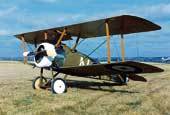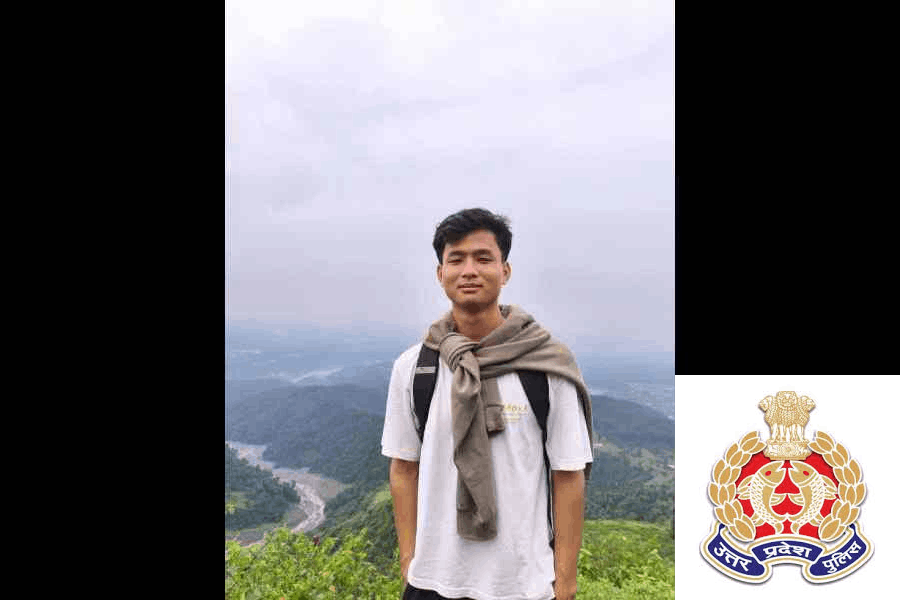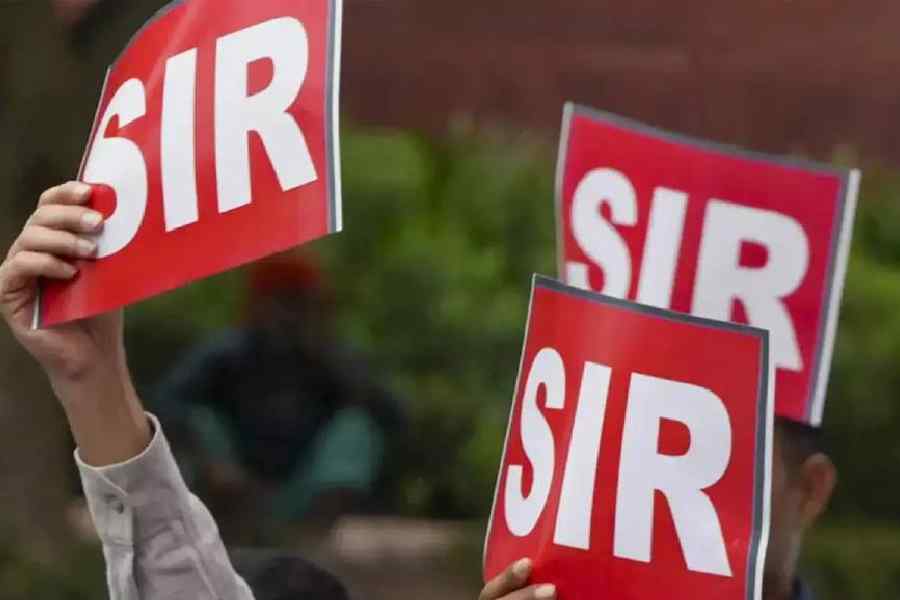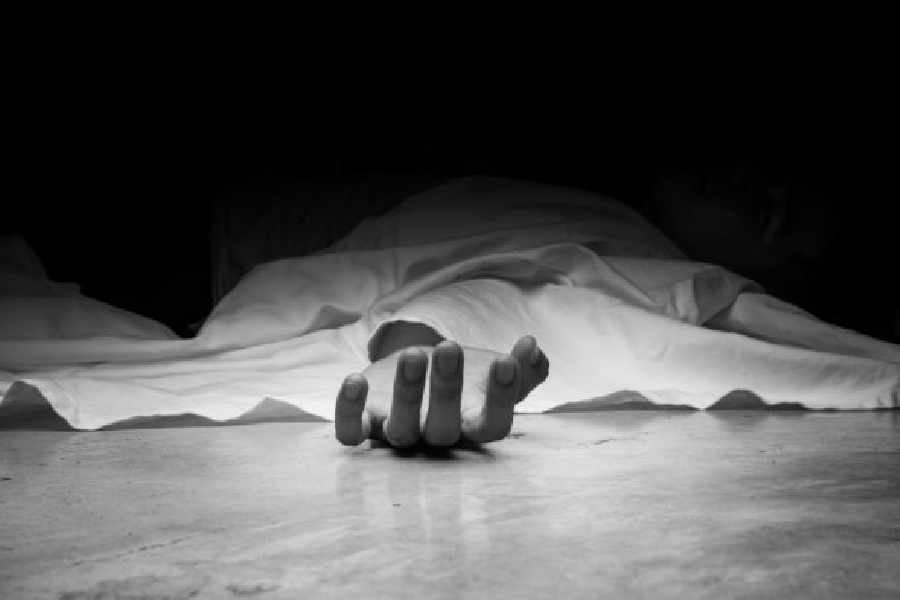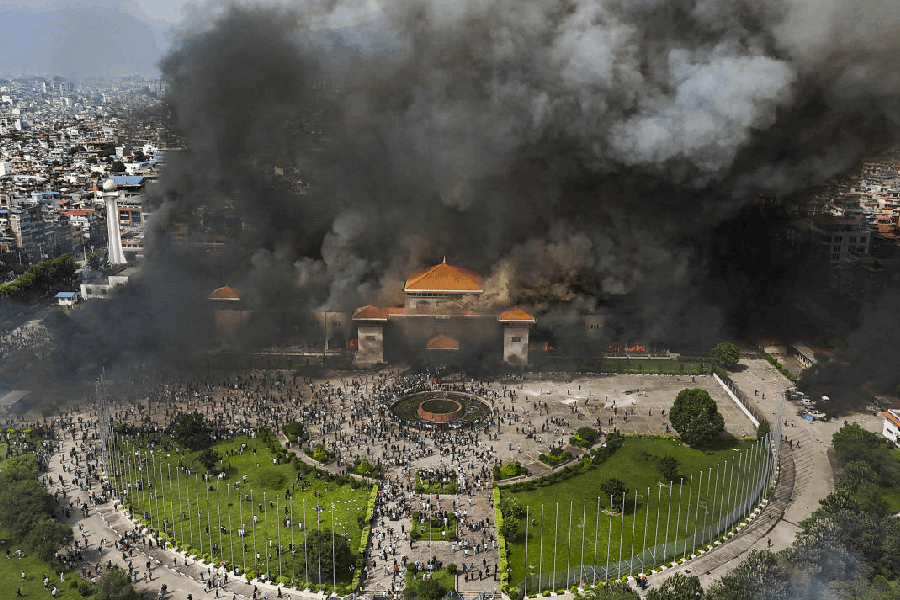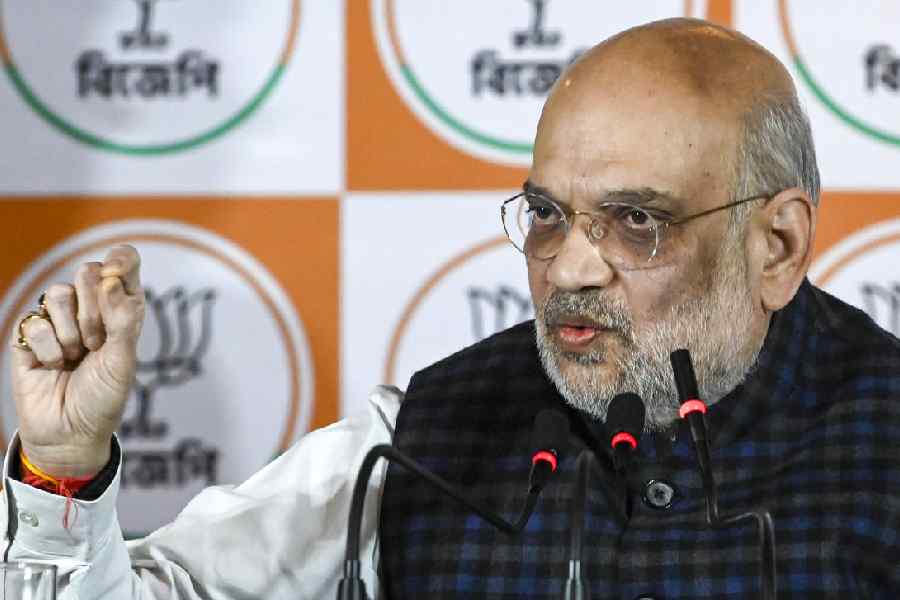 |
| The star and his steed: The Sopwith-Camel and (below) Indra Lal Roy |
 |
Indra Roy Road in Bhowanipore is well-known for the Indira cinema hall, but little is known about the man after whom the road has been named.
Indra Lal Roy of Bengal was the first Indian to be awarded the Distinguished Flying Cross (DFC), one of the most prestigious gallantry awards of Great Britain’s Royal Air Force, for his exemplary service during World War I. It is a matter of great honour that India ’s first ever DFC was conferred — albeit posthumously — on a Bengali officer.
Indra Lal was born in Calcutta in 1898, the scion of an affluent family and was nicknamed “Laddie.” Sent off to a boarding school in London at an early age, he excelled in studies and games. But what young Laddie really wanted was to fly military aircraft.
In those times, it was not unusual for enterprising young Indian men to opt for a military career, but most made a beeline for the Royal Military Academy Sandhurst, which was considered the citadel of military training. It was somewhat of a surprise when Laddie, despite having secured a scholarship to Oxford with the ultimate objective of a covenant in the Indian Civil Service, dropped it all the moment the World War broke out and applied for a commission in the Royal Flying Corps (RFC).
He was accepted by the RFC and after completing his training was commissioned as a lieutenant in July 1917. His first posting was in No. 56 Squadron RFC in France. His commanding officer appreciated the way Laddie flew his plane, the renowned Sopwith-Camel. His debut in operations was well received by his colleagues and his superiors.
Shot down by a German fighter in November of that year, he landed in a no-man’s land, critically wounded. He was picked up by British soldiers and taken to hospital, where he was pronounced “dead on arrival”. He was dispatched to the hospital’s morgue and soon thereafter gave a deathly fright to the hospital staff by “coming alive” and making enough noise to wake the real dead!
After his treatment, Laddie was posted at Farnborough as a grounded officer, much to his dismay. He made the lives of everyone there so miserable with his constant nagging for a field posting that the powers that were eventually gave in. He joined No. 40 Squadron RFC in France in June 1918.
His first kill was a German fighter on July 6, over Arras in northern France. Then onwards he blazed a trail of glory in air combat: between July 9 and 19, he knocked down nine German aircraft.
Over a drink in the mess one evening, Laddie revealed his role model was the late ace British fighter pilot, Captain Albert Ball, whose name spelt terror for German airmen before he was killed in action.
Laddie’s last combat mission was on July 22, 1918. His sortie was attacked by German fighters over Carvin in France. A no-holds-barred dogfight ensued. Laddie downed two German Fokkers but in the process, his own fighter was shot and he went down in flames, falling in German-held territory. He was 20 years old.
An extract from his citation runs “… Lieutenant Indra Lal Roy’s achievement lies not only in his personal excellence as a combat pilot but more as a trailblazer and a pioneer who set an example to a nation like India that was considered too backward to handle sophisticated modern equipment like a fighter plane…..He was an inspiration to his country’s younger generation…”
Acknowledging Laddie’s bravery, the operational unit of Germany’s most famous air warrior Baron Manfred von Richtofen — often emulated by Snoopy in the Peanuts cartoon strip — dropped a wreath on the spot where Laddie fell. His remains were collected by German troops and buried at Levil near Arras.
The Indian government issued a commemorative stamp in his honour in December 1998, his 100th birth anniversary. This apart, a unique inscription was made on his grave in French and Bengali.
The Bengali version read: Maha birer samadhi; sambhram karo, sparsha koro na. (A valiant warrior’s grave; respect it, do not touch it).

